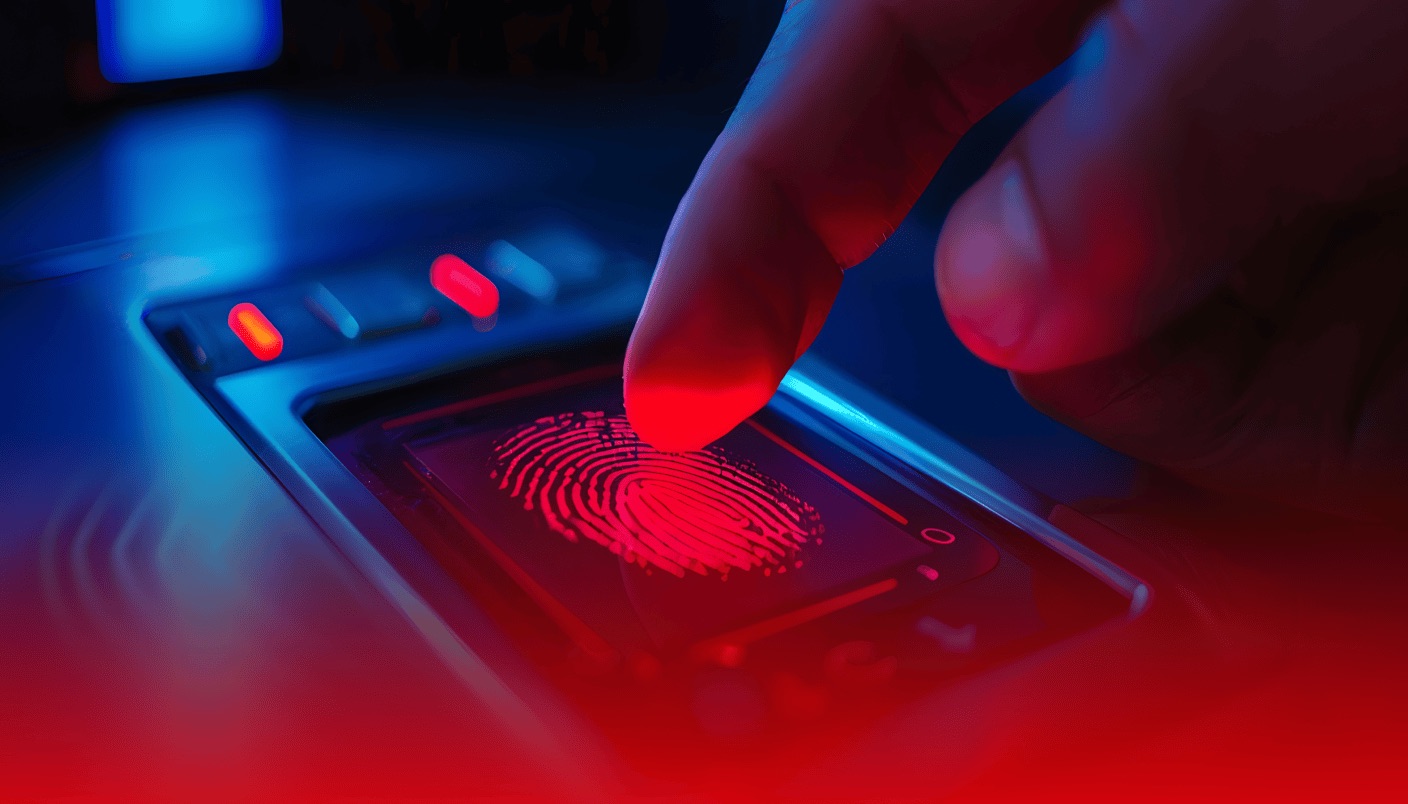Breaking News! 🚨 Top 10 brokers is here! See the most trusted trading platforms of 2024. Go now!
Biometric Authentication in Banking: Advancing Security Measures
Explore the cutting-edge realm of biometric authentication in banking, uncovering its security benefits, challenges, and implementation considerations. Learn how biometric technologies are advancing security measures and enhancing user authentication in financial institutions.
2 years ago, Jun 25, 2:05 pm

What once seemed like fantasy from spy movies has now become a reality in the world of finance. Biometric authentication, including fingerprint scanning, retinal scans, and facial recognition, has firmly established itself in the arsenal of modern banking security technologies.
This innovative method of access control and identity verification is rapidly gaining popularity in the financial sector. In 2023, the digital identification solutions market, a key component of biometric technology, was valued at $34.5 billion. Experts predict active growth in the coming years, with the global biometric system market expected to reach $83 billion by 2027.
As banks and financial institutions continue to prioritize security and customer convenience, biometric authentication is poised to play an increasingly crucial role in shaping the future of banking security measures.
The Rise of Biometric Authentication in Banking
Biometric authentication in financial services is revolutionizing the way we protect sensitive data and conduct transactions. This cutting-edge technology leverages unique physical characteristics, such as fingerprints or facial features, to verify a user’s identity, offering a level of security that traditional methods struggle to match.
The adoption of biometrics in banking is gaining momentum, driven by its ability to significantly reduce fraud and unauthorized access. Unlike passwords or PINs, biometric markers cannot be easily replicated or stolen, making them a formidable defense against identity theft and financial crimes.
Leading financial institutions worldwide are embracing this technology, recognizing its potential to enhance both security and user experience. For instance, innovative solutions like contactless palm-reading systems are emerging, allowing customers to link their unique biometric data to their accounts for seamless, secure transactions.
Recent industry surveys highlight the growing trend:
- A 2023 study revealed that approximately 50% of businesses in retail and financial sectors plan to implement passwordless authentication within the next three years.
- Nearly 60% of IT and cybersecurity executives in the United States expressed intentions to replace traditional passwords with biometric methods such as facial recognition, fingerprint scans, or voice authentication.
- Multi-factor authentication, often incorporating biometric elements, is set to replace standard passwords in 46% of companies, according to respondents.
As the financial landscape continues to evolve, biometric authentication stands at the forefront of banking security, promising a future where accessing our finances is not only more secure but also more convenient than ever before.
Diverse Biometric Technologies in Modern Banking
The banking sector is leveraging a variety of biometric technologies to enhance security and user experience.
Fingerprint and Palm Recognition
These techniques remain the most widely adopted due to their simplicity and user familiarity. Many smartphones now incorporate fingerprint sensors, making this method particularly accessible for mobile banking applications.
Facial Recognition
With advancements in AI and machine learning, facial recognition has become increasingly sophisticated. It offers a seamless authentication process, especially for remote banking services and ATM transactions.
Voice Authentication
This technology analyzes unique vocal characteristics, providing a natural and non-intrusive method of verification. It’s particularly useful for phone banking and voice-activated financial assistants.
Iris Scanning
While less common, iris scanning is gaining traction due to its high accuracy and difficulty to forge. As technology improves, we may see more widespread adoption in high-security banking environments.
Vein Pattern Recognition
An emerging technology, vein pattern recognition uses infrared imaging to map the unique vein patterns in a person’s hand or wrist. Wearable device manufacturers are exploring this method for seamless, continuous authentication.
Each of these biometric technologies offers its own set of advantages, and many banks are opting for multi-modal biometric systems that combine two or more of these methods. This approach further enhances security while providing users with flexible authentication options.
Biometric Banking Implementation
The integration of biometric technology in banking is rapidly transforming the financial landscape, ushering in an era of passwordless authentication. This innovative approach to security is gaining significant traction globally, with experts valuing the market at over $15 billion in 2022 and projecting a surge to exceed $53 billion by 2030.
ATM Transactions
Biometric ATMs are at the forefront of this revolution. Utilizing advanced palm print or finger vein recognition, these machines offer unparalleled security. Industry giants like NCR Corporation and Diebold Nixdorf are spearheading this technology, with the biometric ATM market expected to reach $46.7 billion by 2032, growing at a CAGR of 3.20%.
Voice Recognition
Voice biometrics is redefining customer service authentication. This AI-driven technology analyzes unique vocal characteristics, providing a seamless and secure verification process. It’s particularly beneficial for remote banking and enhancing accessibility for all customers. The global voice recognition market is projected to soar to $50 billion by 2029, with a remarkable CAGR of 23.7%.
Facial Recognition
Facial recognition technology is becoming increasingly prevalent in mobile banking. From account openings to transaction authorizations, this technology offers a frictionless user experience while maintaining robust security. The facial recognition market, valued at $5 billion in 2022, is expected to reach $19.3 billion by 2032, driven by AI advancements.
Multi-Modal Biometric Systems
Banks are increasingly adopting multi-modal biometric systems, combining two or more biometric identifiers. This approach not only enhances security but also provides users with flexible authentication options, catering to different preferences and scenarios.
AI and Machine Learning Integration
The fusion of AI with biometric technologies is opening new frontiers in fraud detection and prevention. An impressive 83% of banking professionals anticipate implementing generative AI in conjunction with biometrics for fraud prevention in the near future.
Mobile-First Approach
With the ubiquity of smartphones, mobile-based biometric authentication is becoming the norm. This trend is driving the development of more sophisticated and user-friendly biometric solutions tailored for mobile devices.
Regulatory Compliance and Ethical Considerations
As biometric implementation accelerates, banks are navigating complex regulatory landscapes to ensure compliance with data protection laws and addressing ethical concerns surrounding biometric data usage and storage.
The implementation of biometrics in banking is not just a technological upgrade; it’s a paradigm shift in how we approach financial security and user experience. As these technologies continue to evolve and mature, we can expect even more innovative applications that will further secure and streamline banking operations, ultimately leading to a more secure and efficient financial ecosystem.
The Future of Biometric Banking: Challenges and Opportunities
As biometric authentication continues to reshape the banking landscape, it brings with it a host of challenges and opportunities that will define the future of financial security. One of the primary hurdles facing widespread adoption is the need for standardization across the industry. Currently, different banks and financial institutions employ various biometric technologies, creating potential compatibility issues and inconsistent user experiences. Establishing universal standards for biometric data collection, storage, and authentication protocols will be crucial in ensuring seamless integration across platforms and institutions.
Privacy concerns also loom large on the horizon. As banks collect and store increasingly sensitive biological data, they must grapple with the ethical implications and potential risks associated with data breaches. Striking a balance between security and privacy will be a delicate task, requiring transparent policies and robust data protection measures to maintain consumer trust.
Despite these challenges, the opportunities presented by biometric banking are immense. The potential for creating truly frictionless banking experiences is within reach. Imagine a world where you can access your accounts, make transactions, and receive personalized financial advice without the need for passwords, PINs, or physical cards. Biometric technology could make this a reality, dramatically reducing transaction times and enhancing customer satisfaction.
Moreover, the integration of biometrics with emerging technologies like blockchain and artificial intelligence opens up new possibilities for fraud detection and prevention. By combining biometric data with AI-powered behavioral analysis, banks could develop incredibly sophisticated systems capable of detecting fraudulent activities in real-time, potentially saving billions in prevented losses.
The future of biometric banking also holds promise for financial inclusion. In regions where traditional banking infrastructure is limited, biometric solutions could provide secure access to financial services for underserved populations. Mobile biometric authentication could enable people in remote areas to open accounts, receive payments, and participate in the global economy without the need for physical bank branches.
As we look ahead, it’s clear that biometric banking is not just a trend but a transformative force in the financial sector. While challenges remain, the potential benefits in terms of security, convenience, and accessibility are too significant to ignore. Banks and financial institutions that successfully navigate this new landscape will not only enhance their security measures but also gain a competitive edge in an increasingly digital and customer-centric market. The future of banking is biometric, and it’s a future full of promise and innovation.
Get SCTA's daily newsletter in your inbox every weekday.
You may unsubscribe at any time.
